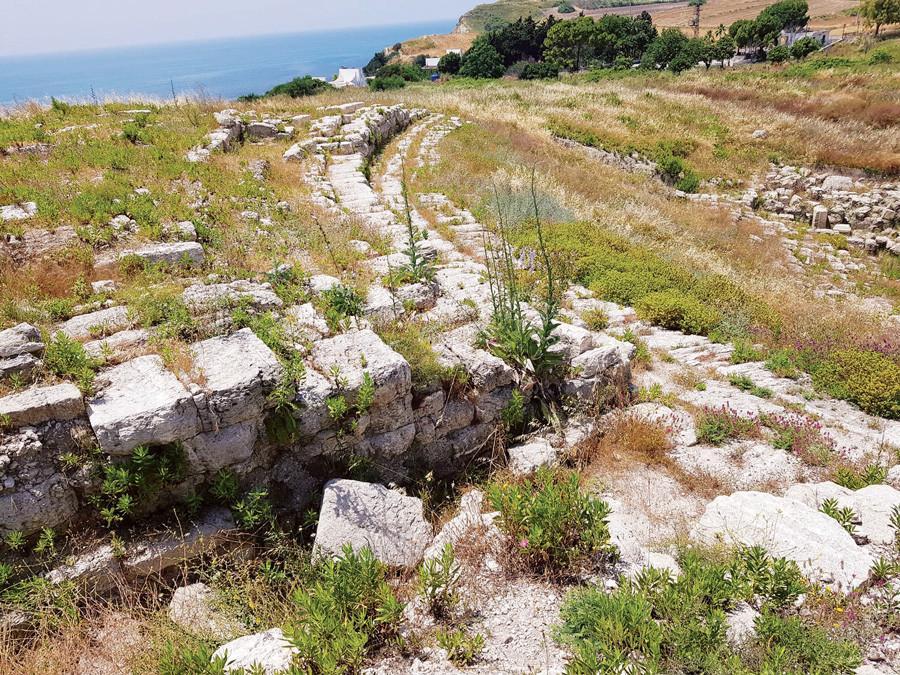
The ancient city of Magarsus, which was unearthed during archaeological works in the southern province of Adana, will shed light on history once excavations are completed.
The excavations in Magarsus were initiated in 2013 with the financial support of the General Directorate of Cultural Heritage and Museums, as well as the Circulating Capital Enterprise, and have been continuing in collaboration with the Adana Museum Directorate, the Provincial Culture and Tourism Directorate, and Çukurova University’s archaeology department.
Located by the seaside in the Karataş district, 49 kilometers away from the city center, the city is named after the Magarsia sisters of the Temple of Athens, where the Macedonian King Alexander the Great sacrificed an animal before going to war with the Persian King Darius.
The seaview ancient theater, which is 150 meters in height and 30 meters in width, is estimated to have a capacity of 4,000 people and will serve culture and art events when the work is completed after 2,500 years.
Ancient city of Magarsus
The ancient city of Magarsus dates back to the fifth and fourth centuries B.C. The name of the city is known as Mallus on coins and in official documents from the Hellenistic, Roman and Byzantine eras.
According to the ancient writer Strabon, the city was founded by Mopsos and Amphilochos, who came to the region after the Trojan War.
Sometime later, a struggle for power started between Amphilochos and Mopsos, but the two died during this struggle. Their bodies were buried in two different places in the city.
The temple of Athena Magarsia in the ancient city of Magarsus was one of the most important prophecy centers in the Mediterranean in the Hellenistic era.
The city, which was first under the rule of the ancient Greeks, was then ruled by the Persians until Alexander the Great defeated King Darius of Persia in Issos in 333 B.C. and began ruling the ancient city.
Ancient geographer Arianos, who lived 1,800 years ago, documents that when Alexander the Great came to the region, he first visited the Temple of Athena Magarsia, which is located 200 meters away from the ancient theater, and then moved to Mallus.